Abstract
Black medical students perceived significantly more stressors than white medical students in a predominantly white medical school environment (P=0.001). Black medical students perceived fewer social supports than white medical students, but not significantly fewer (P=0.224). There was no significant difference between mean systolic and diastolic blood pressure levels for the low and high stress groups (P=0.302 and 0.844, respectively). The total degree of perceived stressors did not predict systolic and diastolic blood pressure when controlling for potential confounders (0.05<P<0.1). The interaction of total degree stressors and total degree of social supports did not significantly predict systolic and diastolic blood pressures when controlling for potential confounding variables (P>0.25 and 0.1<P<0.25, respectively).
Full text
PDF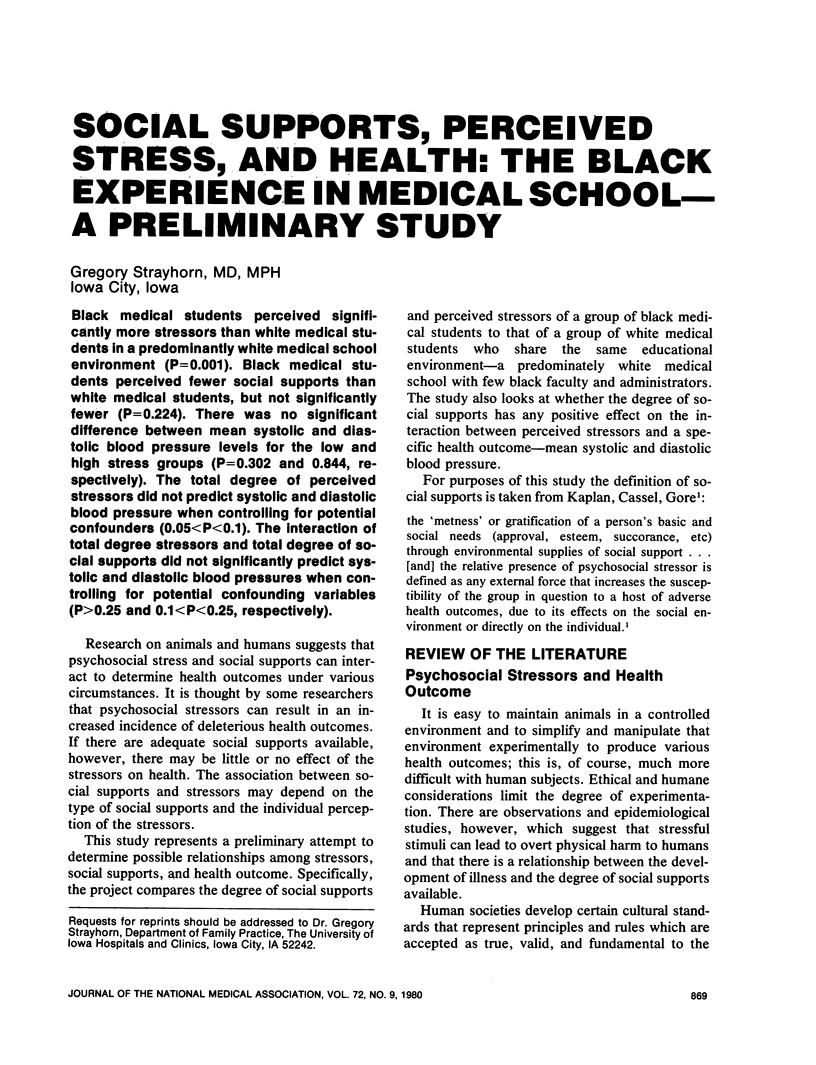
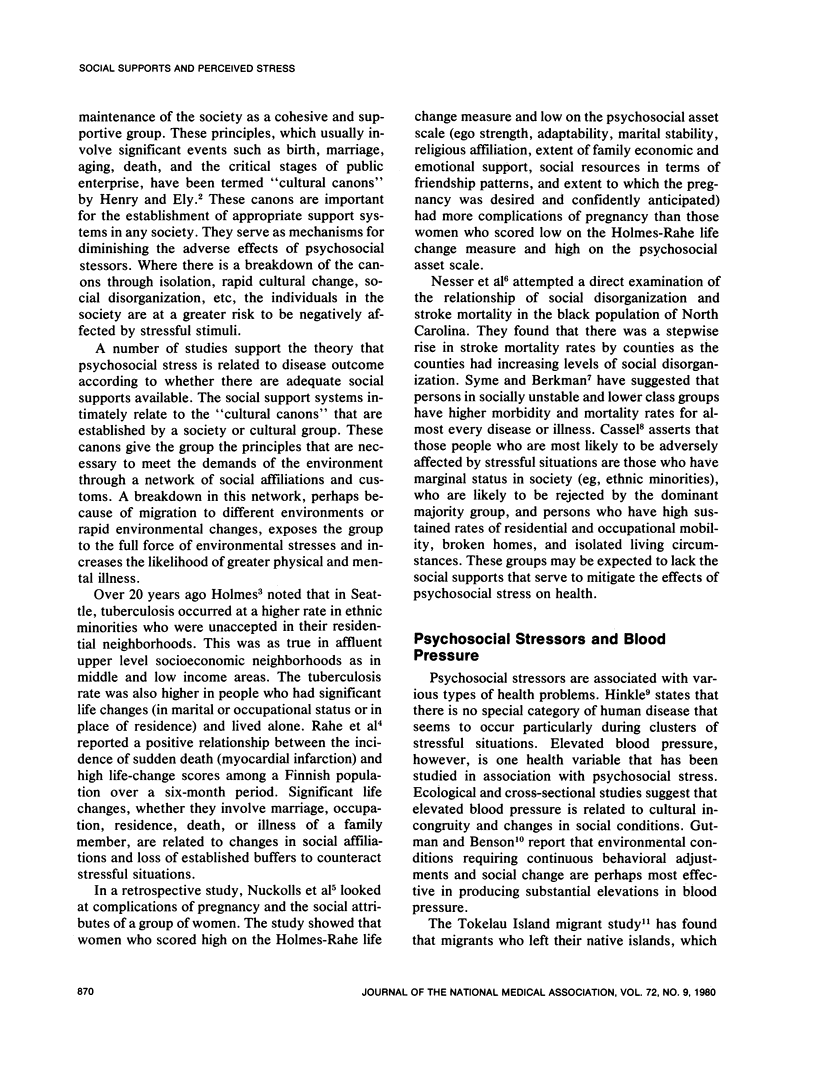
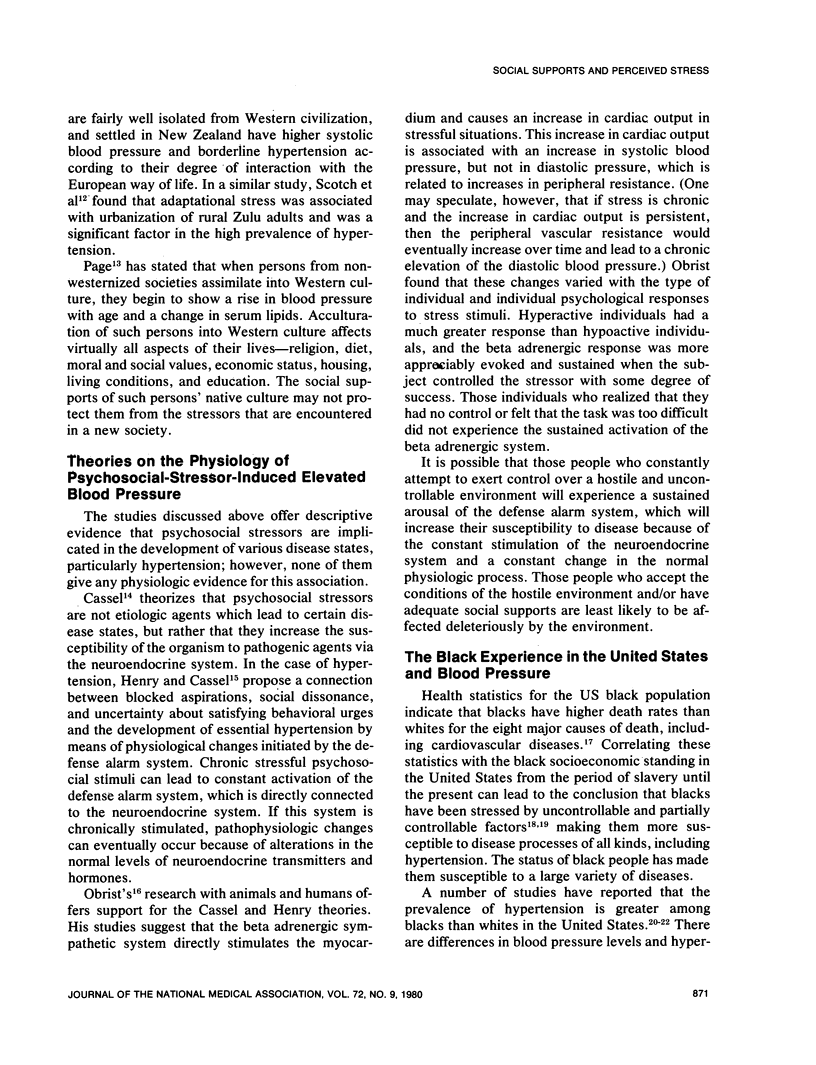
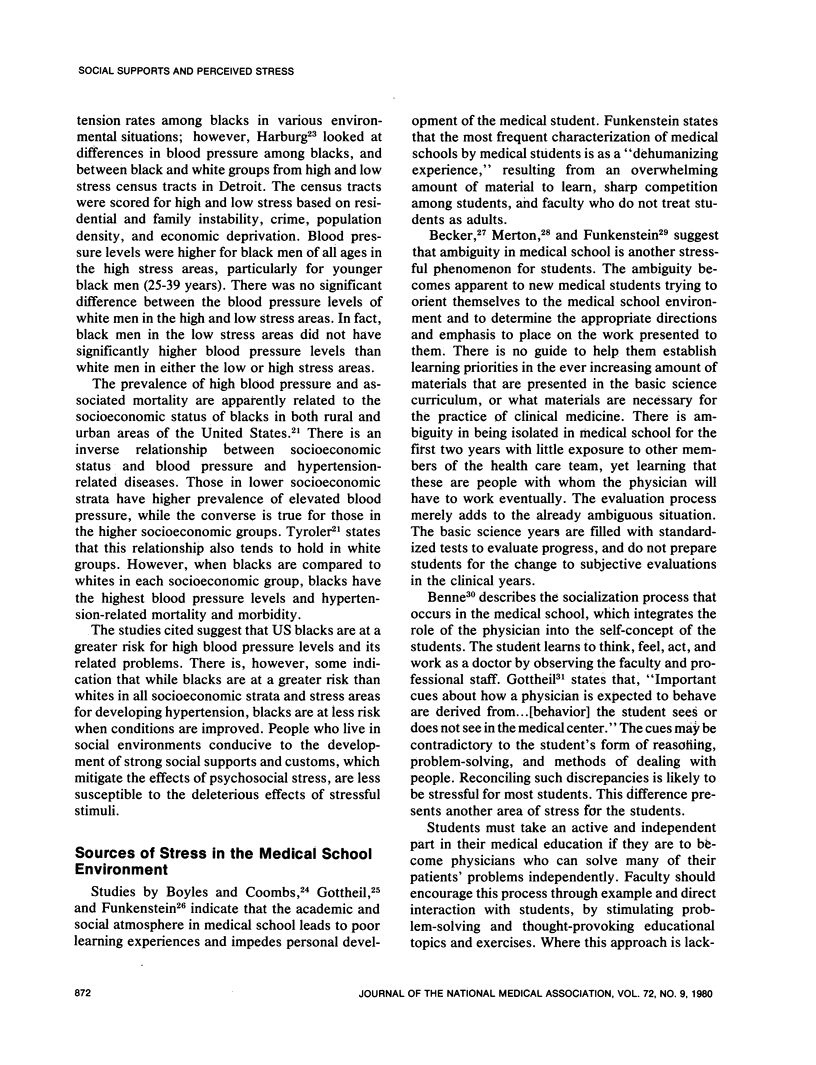
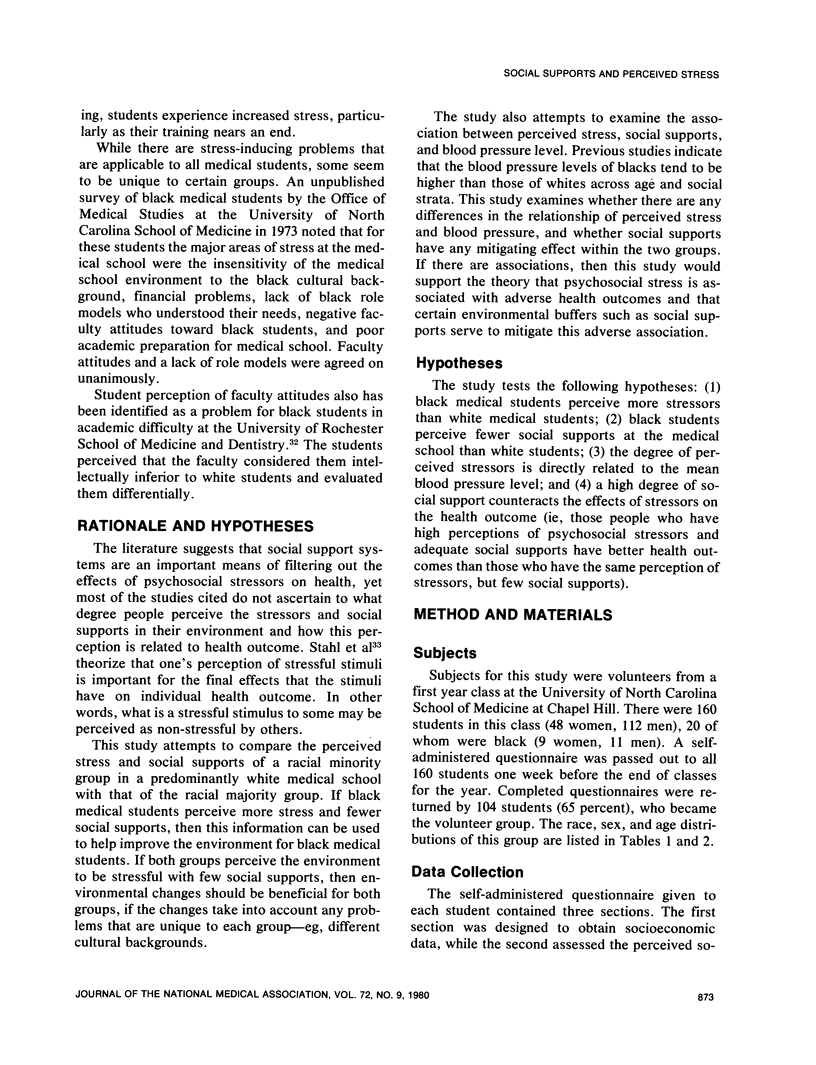
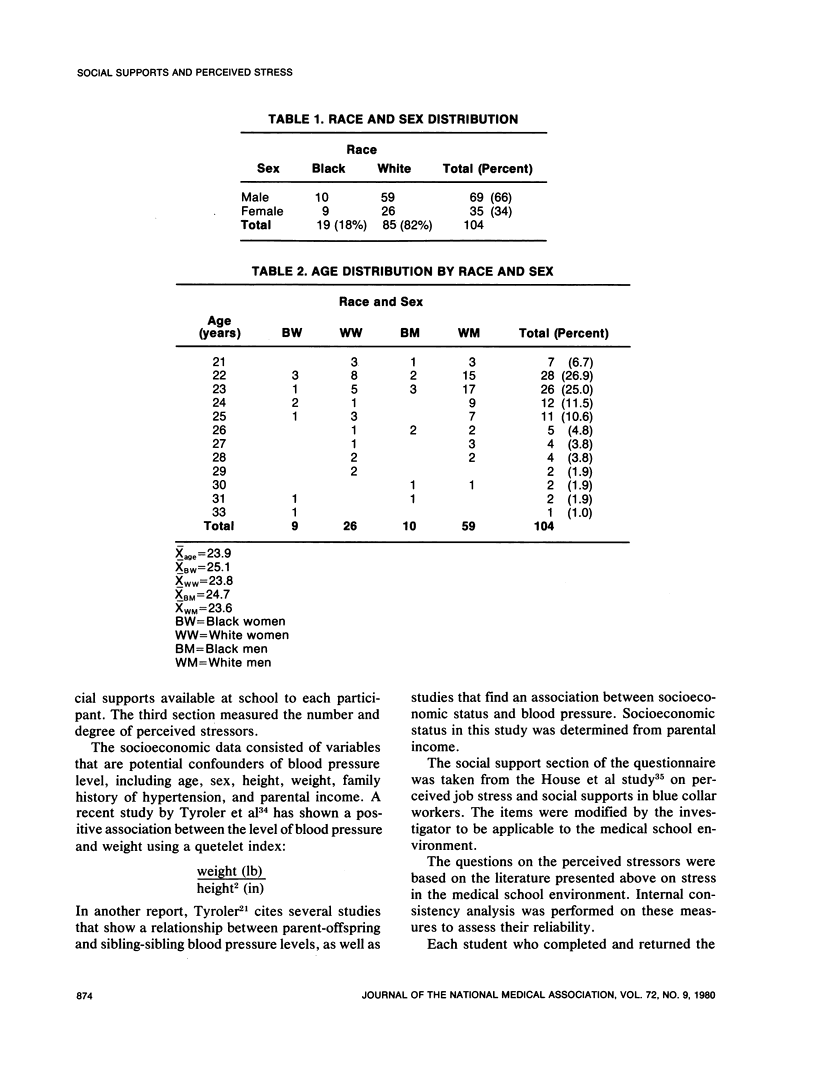
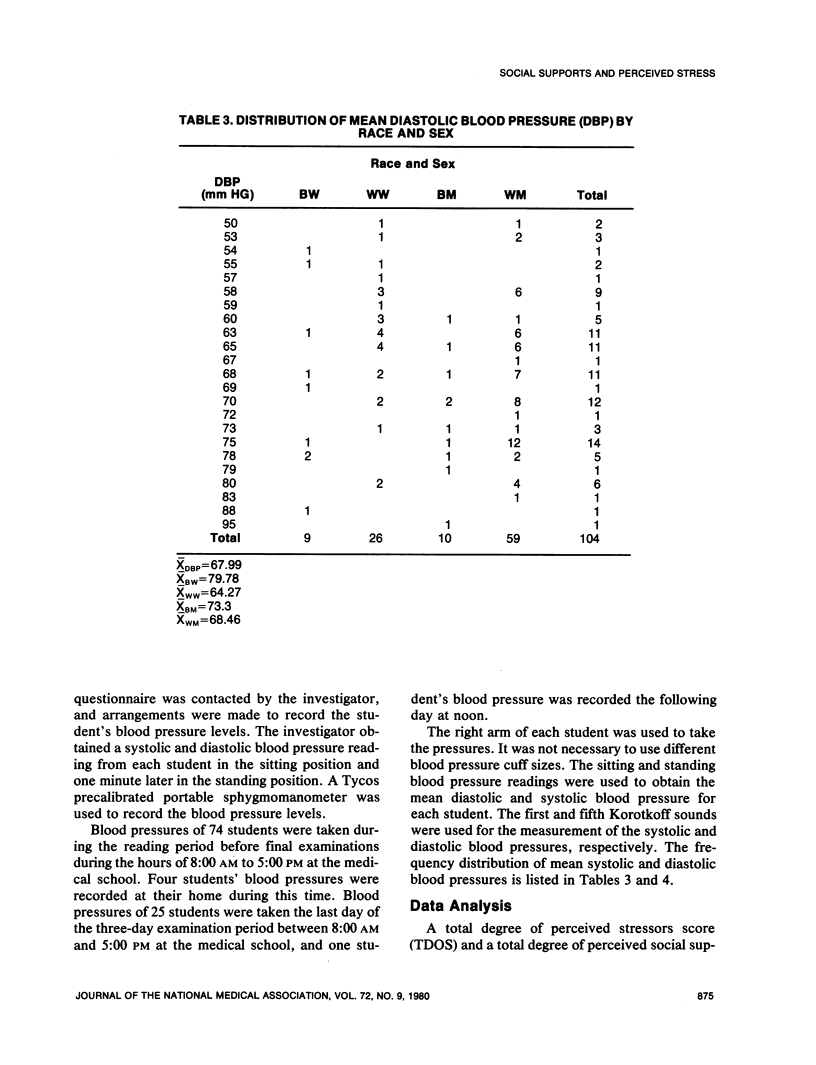
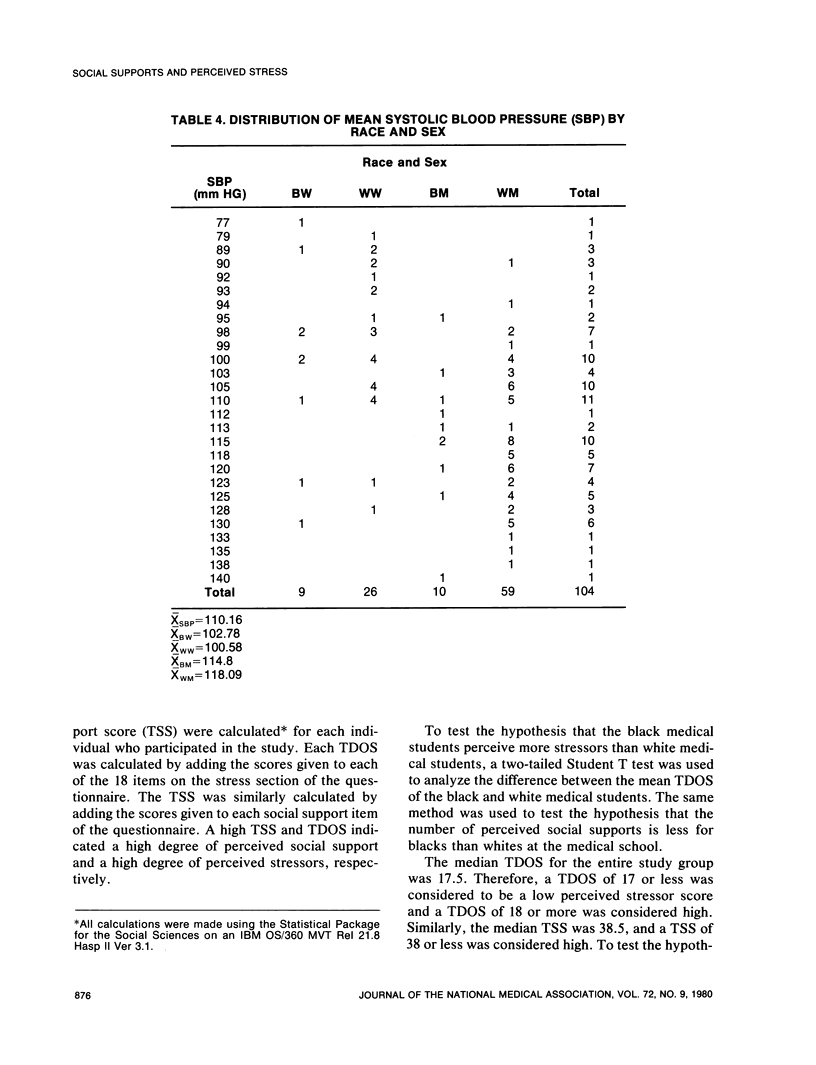
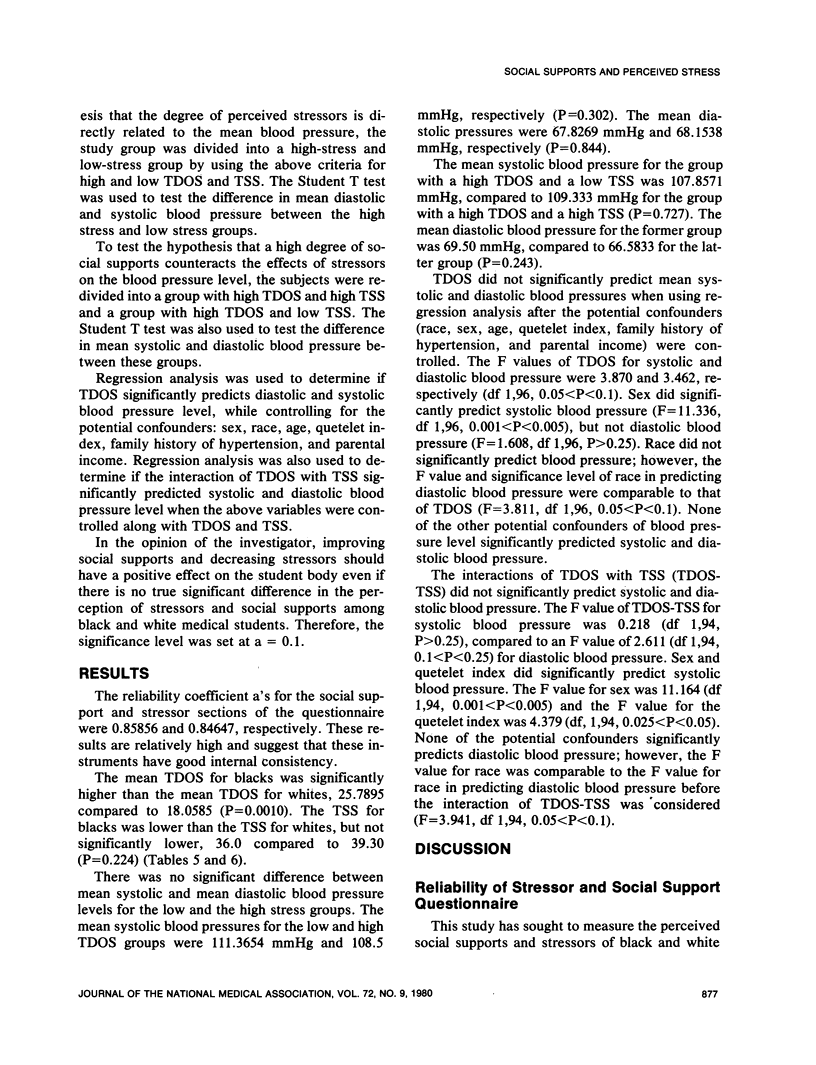
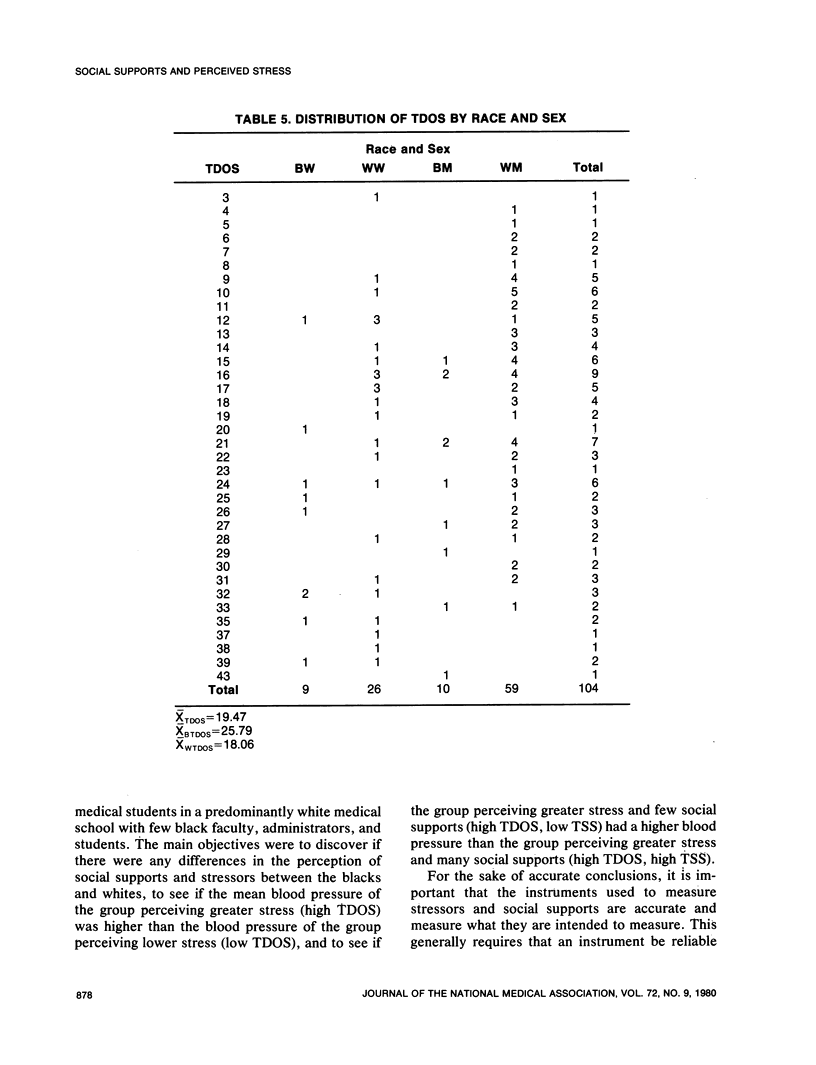
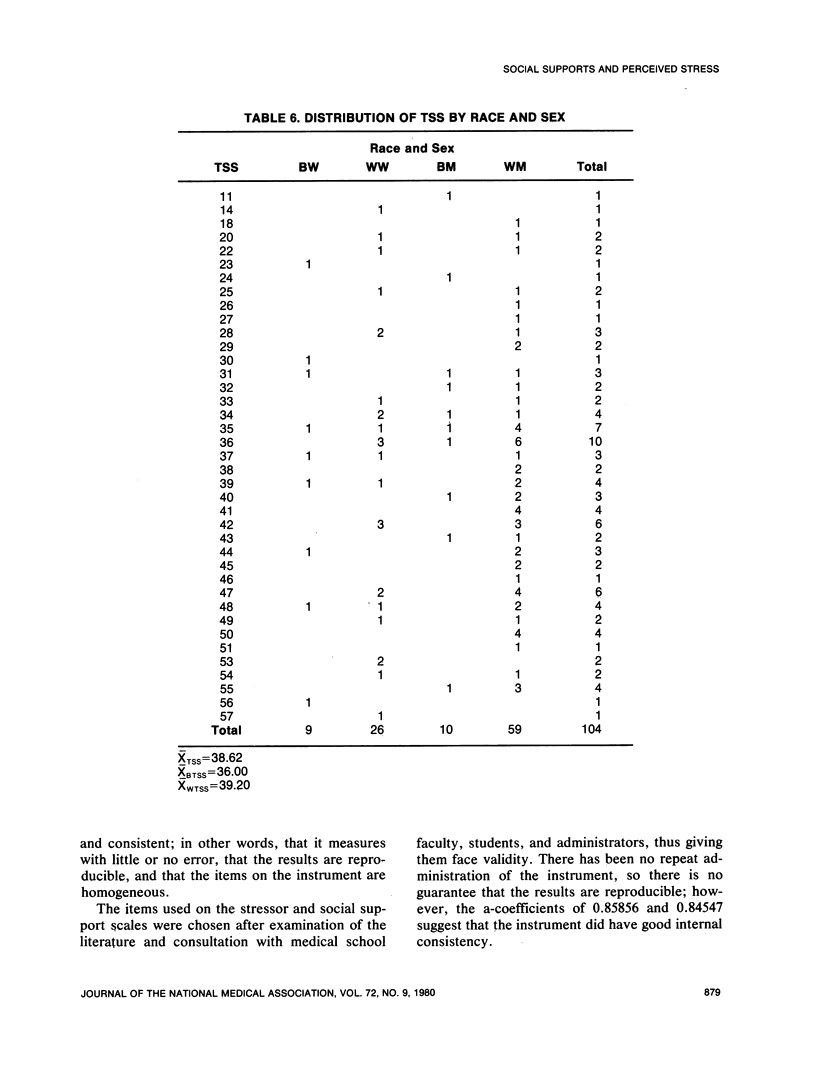
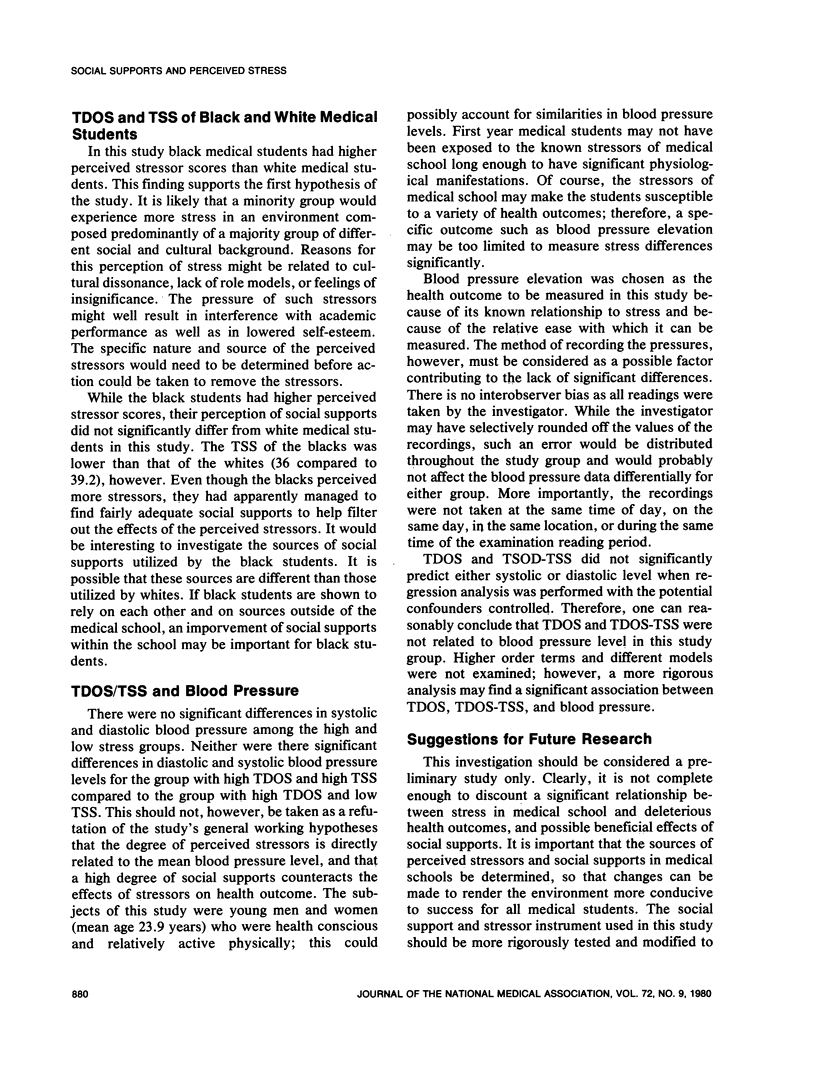
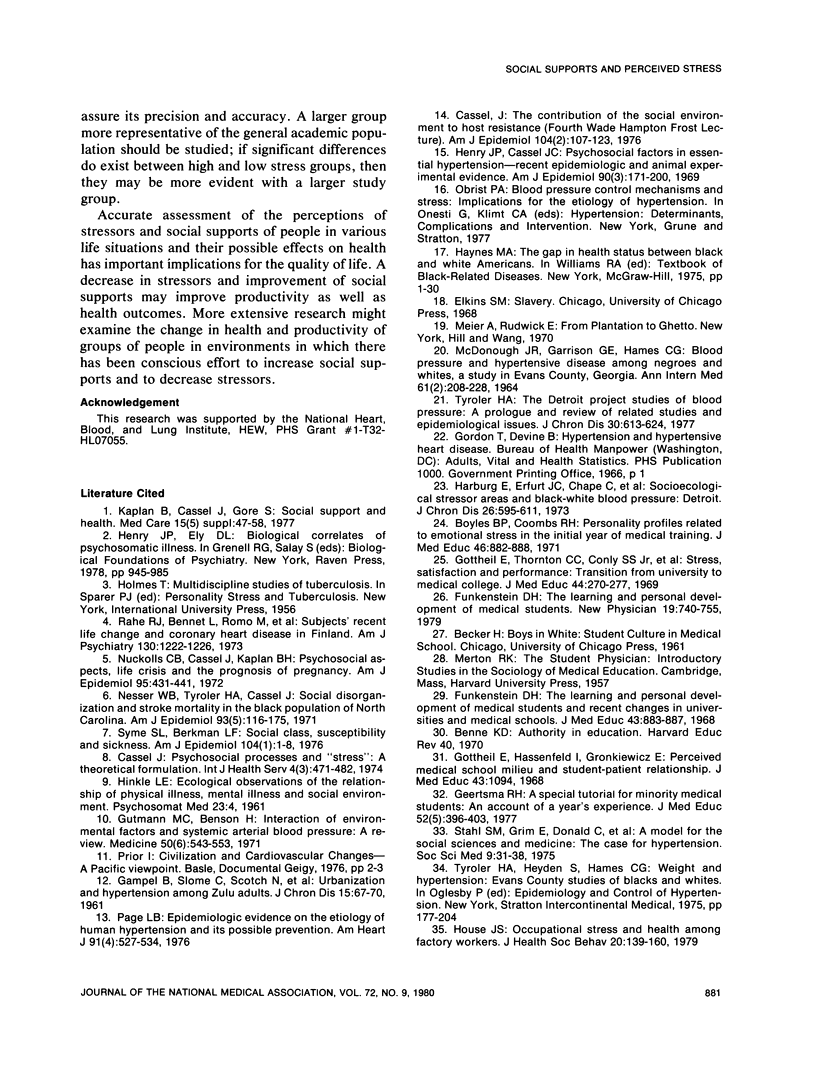
Selected References
These references are in PubMed. This may not be the complete list of references from this article.
- Boyle B. P., Coombs R. H. Personality profiles related to emotional stress in the initial year of medical training. J Med Educ. 1971 Oct;46(10):882–888. doi: 10.1097/00001888-197110000-00011. [DOI] [PubMed] [Google Scholar]
- Cassel J. Psychosocial processes and "stress": theoretical formulation. Int J Health Serv. 1974 Summer;4(3):471–482. doi: 10.2190/WF7X-Y1L0-BFKH-9QU2. [DOI] [PubMed] [Google Scholar]
- Cassel J. The contribution of the social environment to host resistance: the Fourth Wade Hampton Frost Lecture. Am J Epidemiol. 1976 Aug;104(2):107–123. doi: 10.1093/oxfordjournals.aje.a112281. [DOI] [PubMed] [Google Scholar]
- Funkenstein D. H. The learning and personal development of medical students and the recent changes in universities and medical schools. J Med Educ. 1968 Aug;43(8):883–897. doi: 10.1097/00001888-196808000-00002. [DOI] [PubMed] [Google Scholar]
- GAMPEL B., SLOME C., SCOTCH N., ABRAMSON J. H. Urbanization and hypertension among Zulu adults. J Chronic Dis. 1962 Jan;15:67–70. doi: 10.1016/0021-9681(62)90102-9. [DOI] [PubMed] [Google Scholar]
- Geertsma R. H. A special tutorial for minority medical students: an account of a year's experience. J Med Educ. 1977 May;52(5):396–403. doi: 10.1097/00001888-197705000-00004. [DOI] [PubMed] [Google Scholar]
- Gottheil E., Thornton C. C., Conly S. S., Jr, Cornelison F. S., Jr Stress, satisfaction, and performance: transition from university to medical college. J Med Educ. 1969 Apr;44(4):270–277. [PubMed] [Google Scholar]
- Gutmann M. C., Benson H. Interaction of environmental factors and systemic arterial blood pressure: a review. Medicine (Baltimore) 1971 Nov;50(6):543–553. doi: 10.1097/00005792-197111000-00003. [DOI] [PubMed] [Google Scholar]
- Harburg E., Erfurt J. C., Chape C., Hauenstein L. S., Schull W. J., Schork M. A. Socioecological stressor areas and black-white blood pressure: Detroit. J Chronic Dis. 1973 Sep;26(9):595–611. doi: 10.1016/0021-9681(73)90064-7. [DOI] [PubMed] [Google Scholar]
- Henry J. P., Cassel J. C. Psychosocial factors in essential hypertension. Recent epidemiologic and animal experimental evidence. Am J Epidemiol. 1969 Sep;90(3):171–200. doi: 10.1093/oxfordjournals.aje.a121062. [DOI] [PubMed] [Google Scholar]
- House J. S., McMichael A. J., Wells J. A., Kaplan B. H., Landerman L. R. Occupational stress and health among factory workers. J Health Soc Behav. 1979 Jun;20(2):139–160. [PubMed] [Google Scholar]
- Kaplan B. H., Cassel J. C., Gore S. Social support and health. Med Care. 1977 May;15(5 Suppl):47–58. doi: 10.1097/00005650-197705001-00006. [DOI] [PubMed] [Google Scholar]
- MCDONOUGH J. R., GARRISON G. E., HAMES C. G. BLOOD PRESSURE AND HYPERTENSIVE DISEASE AMONG NEGROES AND WHITES; A STUDY IN EVANS COUNTY, GEORGIA. Ann Intern Med. 1964 Aug;61:208–228. doi: 10.7326/0003-4819-61-2-208. [DOI] [PubMed] [Google Scholar]
- Neser W. B., Tyroler H. A., Cassel J. C. Social disorganization and stroke mortality in the black population of North Carolina. Am J Epidemiol. 1971 Mar;93(3):166–175. doi: 10.1093/oxfordjournals.aje.a121243. [DOI] [PubMed] [Google Scholar]
- Nuckolls K. B., Kaplan B. H., Cassel J. Psychosocial assets, life crisis and the prognosis of pregnancy. Am J Epidemiol. 1972 May;95(5):431–441. doi: 10.1093/oxfordjournals.aje.a121410. [DOI] [PubMed] [Google Scholar]
- Page L. B. Epidemiologic evidence on the etiology of human hypertension and its possible prevention. Am Heart J. 1976 Apr;91(4):527–534. doi: 10.1016/s0002-8703(76)80337-7. [DOI] [PubMed] [Google Scholar]
- Rahe R. H., Bennett L., Romo M., Siltanen P., Arthur R. J. Subjects' recent life changes and coronary heart disease in Finland. Am J Psychiatry. 1973 Nov;130(11):1222–1226. doi: 10.1176/ajp.130.11.1222. [DOI] [PubMed] [Google Scholar]
- Stahl S. M., Grim C. E., Donald C., Neikirk H. J. A model for the social sciences and medicine: the case for hypertension. Soc Sci Med. 1975 Jan;9(1):31–38. doi: 10.1016/0037-7856(75)90156-0. [DOI] [PubMed] [Google Scholar]
- Syme S. L., Berkman L. F. Social class, susceptibility and sickness. Am J Epidemiol. 1976 Jul;104(1):1–8. doi: 10.1093/oxfordjournals.aje.a112268. [DOI] [PubMed] [Google Scholar]
- Tyroler H. A. The Detroit project studies of blood pressure. A prologue and review of related studies and epidemiological issues. J Chronic Dis. 1977 Oct;30(10):613–624. doi: 10.1016/0021-9681(77)90020-0. [DOI] [PubMed] [Google Scholar]


